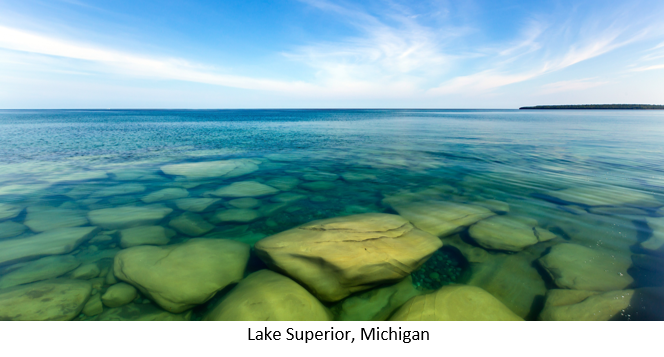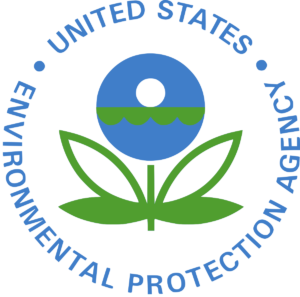WATER AND WATER QUALITY
Thursday, April 18, 2019

Let’s get started with a few facts……..

And a few more facts (scary!) about water quality:[1]
- Around 70%
of the industrial waste is dumped into the water bodies where they pollute the
usable water supply. - Fourteen
billion pounds of garbage mostly plastic, is dumped into the ocean every
year. - 15 million
children under the age of five die each year because of diseases caused by
drinking water. - In America,
40% of the rivers and 46% of the lakes are polluted and are considered
unhealthy for swimming, fishing or aquatic life. - As per U.S.
EPA estimates, every year in the U.S, 1.2 trillion gallons of sewage from
household, industry and restaurants is dumped in to U.S. water annually. - Plastic
waste being a major water pollutant, is causing huge destruction of marine life
and is believed to be responsible for deaths of more than 100,000 sea
mammals, sea birds and various types of fishes. - Aquatic
animals have faced an estimated extinction rate five times more than that of
terrestrial animals. - Cruise ships are also a major source of
water pollution. They produce over 200,000 gallons of
sewage which is mostly released in the ocean. Apart from that, they are also
causing at least 35,000 gallons of water contamination
due to oil spills.
What is Water
Quality?
As defined by
the World Health Organization, “Water
quality is a term used to express the suitability of water to sustain various
uses or processes. Any particular use will have certain requirements for the
physical, chemical or biological characteristics of water; for example limits
on the concentrations of toxic substances for drinking water use, or
restrictions on temperature and pH ranges for water supporting invertebrate
communities.”
In its
simplest terms, water quality is the degree
to which water is clean,
and whether it is suitable
for drinking, for making plants grow,
or for fish to live
in, etc.
Drinking water standards are regulations that the EPA
(Environmental Protection Agency) sets to control the level of contaminants in
the nation’s drinking water. These standards are part of the Safe Drinking
Water Act that protects public drinking water supplies throughout the
nation. It includes assessing and
protecting drinking water sources; protecting wells and collection systems;
making sure water is treated by qualified operators; ensuring the integrity of
distribution systems; and making information available to the public on the
quality of their drinking water.
Each regulation outlines the requirements that systems must
follow. It is the role of each state and local government to make sure their
utilities follow these regulations, to ensure safe drinking water for the
general public.
The EPA provides a good deal of useful information for both the professional plumber and consumers. Here is a link to their website: https://www.epa.gov/environmental-topics/water-topics For state specific information: https://www.epa.gov/wqs-tech/state-specific-water-quality-standards-effective-under-clean-water-act-cwa

[1] Conserve Energy Future
To Test or Not To Test?
Depending on where your water is
coming from will help determine if your home water should be tested. Water companies generally draw water from
nearby lakes, rivers, and groundwater – and most people get their water through
these companies. This water is filtered
to remove harmful particles and pollutants.
The water company is responsible for the cleanliness of your water and is
required to meet the government mandated safety regulations. Consumers may request a regular report from
the water company they use that will tell them about the safety and cleanliness
of their water.
Americans that live in rural areas typically get their water from wells – about 15% of Americans. It is recommended that well owners test their water once a year with the National Ground Water Association. https://www.ngwa.org/

For more detailed information about water quality testing,
visit https://www.fondriest.com/environmental-measurements/equipment/measuring-water-quality/
The Professionals Role in Water Quality
The World Health Organization has declared plumbers the most important front line health workers around the globe. The professional plumbing industry makes significant contributions every day to all aspects of water quality, conservation and water reuse.
The plumber is responsible for ensuring the plumbing system is safely installed and to help guide homeowners in their decisions about their water systems.
Plumbers will also help homeowners by providing
them the information they need to determine the worthiness of investing in
water treatment options for a healthy life, but also to extend the life of
plumbing system, tankless water heater, fixtures, etc.
Other resources for information on water
quality:
The Water Quality Association: https://www.wqa.org/improve-your-water/benefits-of-good-water-quality
The Center for Disease Control and
Prevention – Healthy Water: https://www.cdc.gov/healthywater/
History of the Clean Water Act: https://www.epa.gov/laws-regulations/history-clean-water-act
Questions? Contact me at communications@brasscrafthq.com



